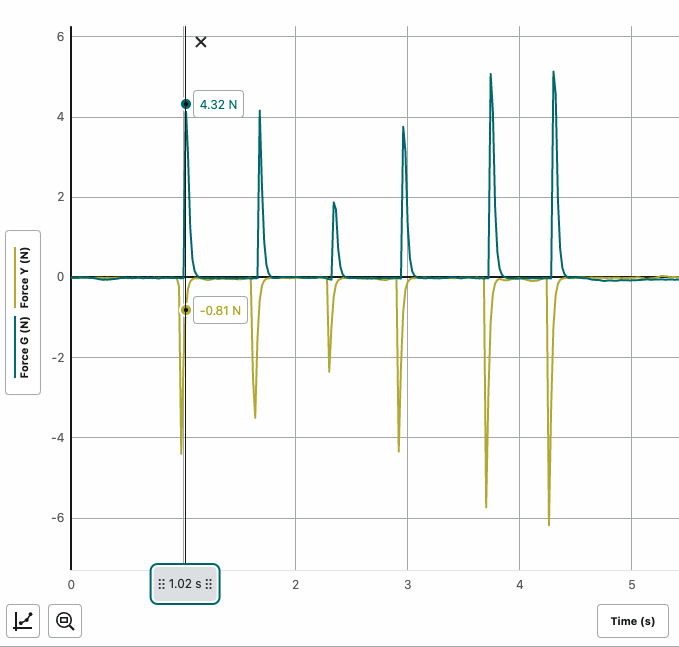When using two wireless force sensors, such as those found in our Go Direct® Force and Acceleration Sensor (

Out of sync data like this can result from two sources:
- Lag in the data transmission – Wireless data transmission like Bluetooth adds some delay (on the order of milliseconds) to when it is reported in Graphical Analysis. Since no two Bluetooth radios are in perfect sync with each other, data collected from two Bluetooth sensor will likely be slightly out of sync.
- If the actual impulse felt by the force sensor is especially small – as may be the case when using rubber bumpers – the response from the force sensor is limited to mechanical characteristics of the force sensor itself. This is not a defect, but is simply the behavior of any mechanical force sensor. If you want to really see the applied impulse, rather than the response of the force sensor’s load cell, you need to ensure that the collision lasts substantially longer than the mechanical response time of the sensor.
The best solution to both causes is to lengthen the duration of the applied impulses. We recommend using our Hoop Bumpers for Bumper and Launcher Kit (
Related TILs
Go Direct Force and Acceleration Sensor Troubleshooting and FAQs
Go Direct Sensor Cart Troubleshooting and FAQs
